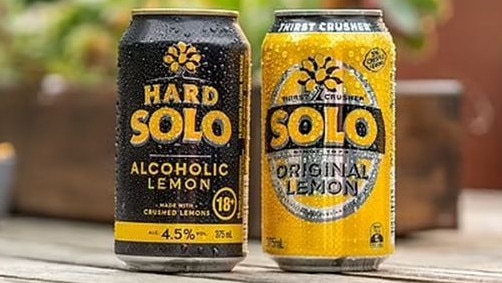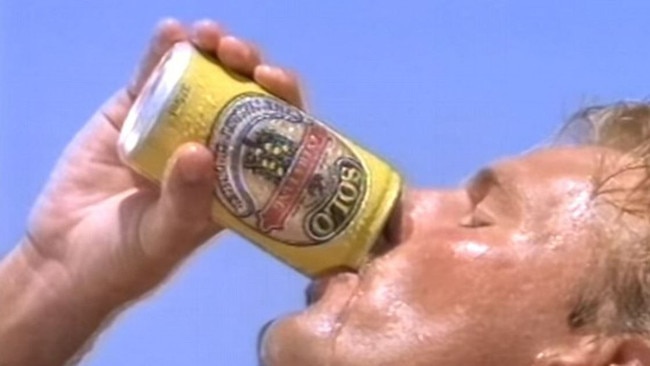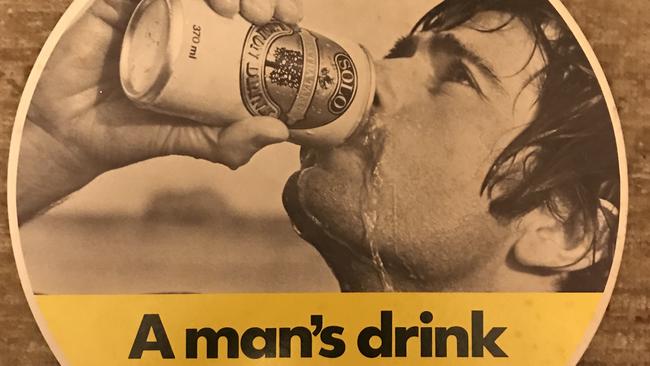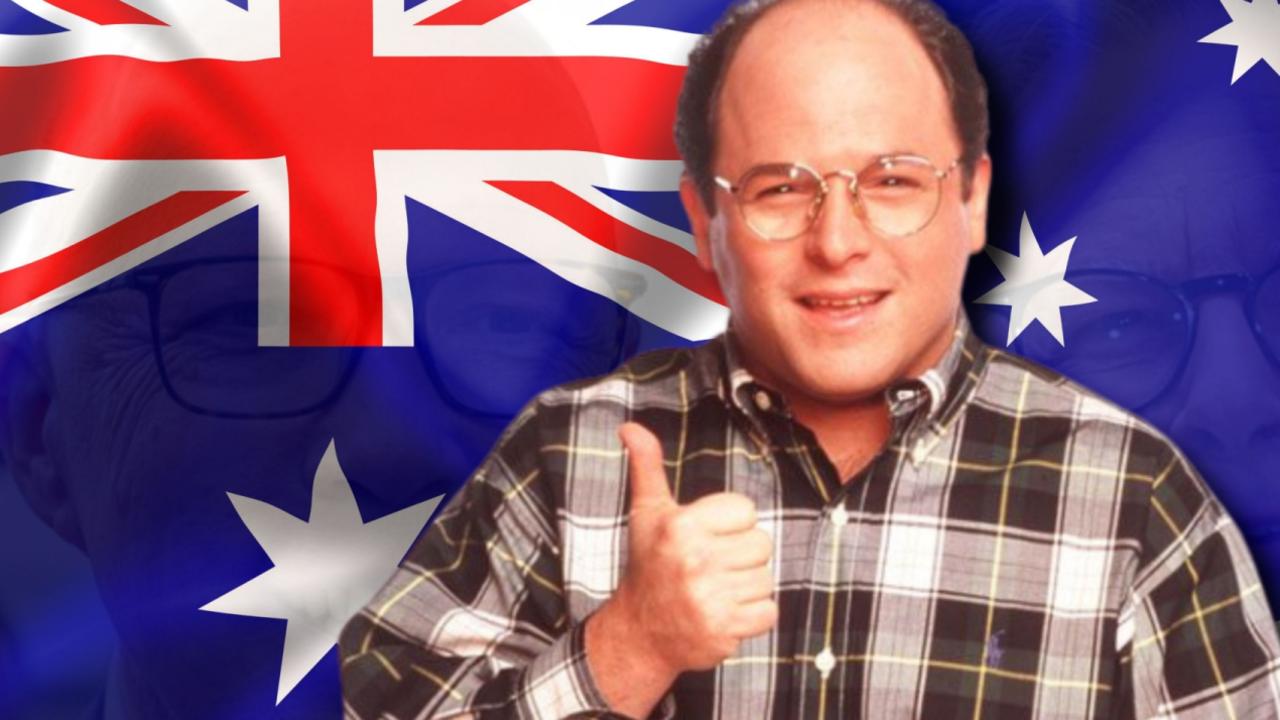David Penberthy | ‘No need to treat us adults like babies’: Cancer Council’s concerns over Hard Solo unnessary
Hard Solo has been accused of leveraging its popular soft drink to entice underage drinkers, but David Penberthy argues Solo has zero recognition with anyone under the age of 30, let alone 18.

Opinion
Don't miss out on the headlines from Opinion. Followed categories will be added to My News.
Those of us of a certain age have enduring memories of The Solo Man.
He was a swashbuckling, loin cloth-clad, Alby Mangels-style adventurer, kayaking through the rapids with nothing but a paddle and a great 1970s moustache, quenching his thirst with an ice-cold can of Solo – light on fizz so you can slam it down fast, indeed.
The Solo Man has been in the news of late, in the kind of panicky fashion favoured by the more professionally worried corners of the health lobby, on account of his reappearance in alcoholic form.
Solo has re-emerged as “Hard Solo”, a 4.5 per cent lemon flavoured alcoholic beverage, available now in all good bottle shops.
Not in milk bars or in showbags or at school tuck shops, but bottle shops, where alcoholic beverages, of course, belong.
It is being sold in premises that are legally off limits to anyone under the age of 18.

There is now a parliamentary inquiry underway in NSW into the emergence of Hard Solo. The WA Cancer Council has lodged an official complaint.
Others have asked how it was that the Alcoholic Beverages Advertising Code ever green-lighted such an apparently heinous product.
I am not sure if any of the people complaining about it have kids, or if they have spoken to them about their hitherto unknown love of Solo.
But as far as I can tell, Solo is a brand which has zero recognition with anyone under the age of 30, let alone 18.
This Hard Solo concept is a retro marketing exercise aimed at those of us who grew up in the 1980s, and who developed a taste for lolly water through the excellent invention of West Coast Cooler around that same time.
The capacity for moral panic is in no way reflected in the statistical evidence about the consumption of alcohol in this country.
For a country that started life as a rum-soaked penal colony, grog consumption in Australia is in free fall compared to our convict origins.
You’d hope of course that was the case, given how drunk we all were in 1788.
But even in the past two generations, from the late 60s to the present day, the rate at which we drink has fallen by well over two thirds.
The drop has been the most pronounced in the past two decades.
The most recent data from the Australian Institute of Health and Welfare found the number of young people aged 14 to 24 drinking at risky levels almost halved between 2001 and 2019 – down from 25 per cent to 13 per cent.
In the same period, the number of young people who completely swore off the grog more than doubled from 18 per cent to 38 per cent.
That’s almost half of the nation’s 14 to 24 year olds never drinking at all.
Kids these days!
There is a weirdly non-corresponding link between our rates of panic and alcoholic consumption – the less people drink, the more the health lobby worries about it.
Maybe I’ve addled my brain through too much Coopers and Penfolds, but from where I sit this makes no logical sense.
The Hard Solo furore is superficially alluring for the health lobby in that you can argue that the “hard” and “soft” versions of the drink look uncannily similar.
This of course ignores the fact that the hard version is not sold anywhere children are allowed to buy drinks, rendering the whole debate even sillier.
But it’s in the area of alcohol being available and aimed exclusively at adults where the rest of us should kick back.
The idea that alcohol in all its forms is nothing other than a dangerous carcinogen is creeping its way onto the marketing of bottled wine, a product which is only aimed at adults and largely only consumed by adults.
A couple of months ago pregnancy warnings started appearing on every wine bottle in Australia.
Now the world has changed and these days most pregnant and nursing mothers won’t drink at all.
Some might choose to drink a tiny amount of wine.
We have got that memo, and probably don’t need a little sticker to remind us not to down a bottle of chardy while poring over the paint charts to work out a colour scheme for the nursery.

The point is whether these health warnings are merely aimed at the issue of pregnancy, or seen by the more militant and abstemious health professionals as a mere starting point to full-blown shock tactic ads on wine bottles, as per those in cigarette packets.
Normal people who know how to have civilised fun after a few quiet ones, or even a couple of loud ones, should resist this nanny state nonsense.
Every cigarette might be doing you damage but not every drink will kill you.
Indeed most of them will make you feel better because they taste good, match well with good food, and are a fun adjunct to catching up with friends.
They don’t have to be, of course. You don’t need to drink to have a good time.
But there’s a reason we say Thank God it’s Friday, rather than Thank God It’s Tuesday, and why a sneaky Friday night trip through the drive-through or perusing your local cellar is regarded by many of us as a fun and appropriate start to the weekend.
Even the Irish are talking about putting big warning labels on their whisky, warning drinkers about the risk of liver disease and cancer, and even listing the calorie content of the bottle. The Italians have got the right idea.
Their Foreign Minister Antonio Tajani has threatened to take the European Union to the World Trade Organisation if such labels are made standard, denouncing warnings on wine bottles as an “attack on the Mediterranean diet”.
Mr Tajani is right. Statistically in Australia, we can use his argument too, as all the evidence suggests we are drinking less, and drinking smarter, than at any time in our history.
By the length of a yard’s glass, in fact, suggesting there is no need to treat us adults like babies.



